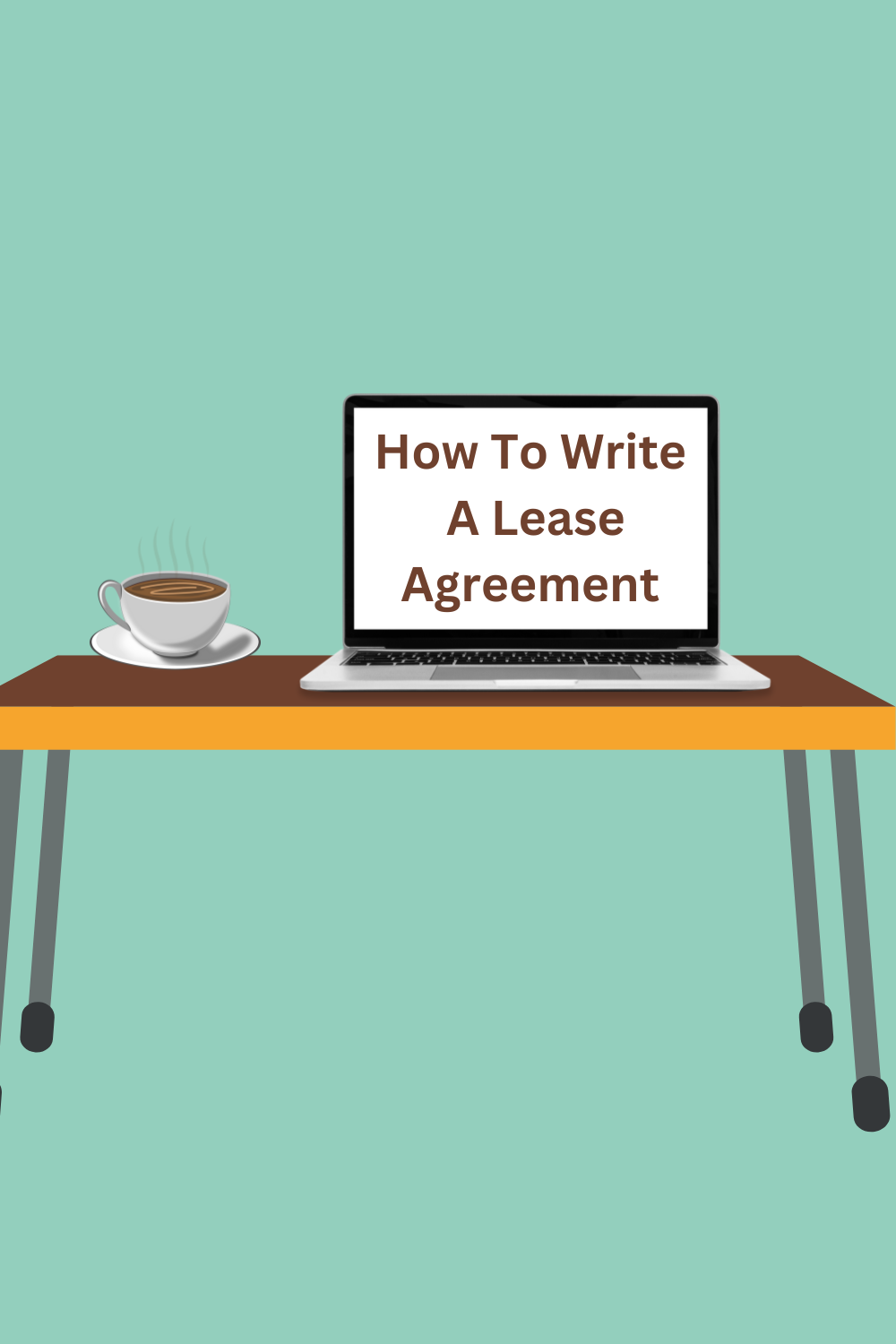A lease agreement is a legally binding contract between a landlord and a tenant. It outlines the terms of the rental, including the rent amount, the term of the lease, the landlord's and tenant's rights and responsibilities, and the procedures for handling repairs, disputes, and early termination. A well-written lease agreement can help to protect both the landlord and the tenant. It can also help to resolve disputes if they arise.
Types of Lease Agreements
Month-to-month lease: This type of lease is the most flexible, as it allows you to terminate the lease at any time, with or without notice, by giving the landlord the required amount of notice. However, month-to-month leases typically have higher rent than other types of leases.
Fixed-term lease: This type of lease is for a specified period of time, such as one year or two years. Once the lease term has expired, the tenant has the option to renew the lease or vacate the property. Fixed-term leases typically have lower rent than month-to-month leases.
Gross lease: This type of lease includes all operating expenses, such as property taxes, insurance, and utilities. The tenant is only responsible for paying rent. Gross leases are typically used for commercial properties.
Net lease: This type of lease requires the tenant to pay a portion of the operating expenses, such as property taxes, insurance, and utilities. The tenant is also responsible for paying rent. Net leases are typically used for both commercial and residential properties.
Percentage lease: This type of lease requires the tenant to pay a percentage of their gross sales as rent. Percentage leases are typically used for retail properties.
Rental Agreement/Lease Agreement Template
Common Lease Agreement Disclosures and Addendums

Lease agreements often include disclosures and addendums that provide additional information about the property or the terms of the lease. Some of the most common disclosures and addendums include:
Lead-based paint disclosure: This disclosure is required in most states and provides information about the presence of lead-based paint on the property.
Mold disclosure: This disclosure is required in some states and provides information about the presence of mold on the property.
Pet Policy: This addendum outlines the landlord's pet policy, which may include restrictions on the type, size, and number of pets that are allowed on the property.
Smoking policy: This addendum outlines the landlord's smoking policy, which may include restrictions on smoking inside or outside of the property.
Early termination policy: This addendum outlines the terms and conditions for early termination of the lease, such as the amount of notice that is required and any early termination fees that may be assessed.
Security deposit addendum: This addendum outlines the terms and conditions for the security deposit, such as the amount of the deposit, how it will be used, and how it will be returned.
Assignment and subletting addendum: This addendum outlines the terms and conditions for assignment and subletting, which are when a tenant transfers their lease to another person or allows another person to live in the property.
Other addendums: There may be other addendums that are specific to the property or the landlord's requirements.
Security Deposit Laws In California

Understanding security deposit laws is crucial for both landlords and tenants in California. These laws govern the handling and protection of security deposits, which are a common requirement in rental agreements.
Maximum amount: The maximum amount of a security deposit is two months' rent for an unfurnished unit and three months' rent for a furnished unit.
Return of deposit: The landlord must return the security deposit within 21 days after the tenant moves out, minus any deductions for damages that are beyond normal wear and tear.
Deductions: The landlord can only deduct from the security deposit for damages that are beyond normal wear and tear. The landlord must provide the tenant with an itemized list of deductions within 21 days of returning the deposit.
Late return: If the landlord fails to return the security deposit or provide an itemized list of deductions within 21 days, the landlord may be liable to the tenant for up to twice the amount of the deposit.
Small claims court: If the landlord fails to return the security deposit or provide an itemized list of deductions in a timely manner, the tenant can file a lawsuit against the landlord in small claims court.
It is important to note that these are just some of the most important security deposit laws in California. The specific laws that apply to a particular situation may vary depending on the circumstances. It is always best to consult with an attorney if you have any questions about security deposit laws in California.
Here are some additional tips for dealing with security deposits in California:
Take pictures of the property before you move in: This will help to document the condition of the property and protect you from any false claims of damage by the landlord.
Get everything in writing: This includes the terms of the lease, the amount of the security deposit, and the landlord's policy on deductions.
Keep good records: This includes receipts for any repairs you make to the property, as well as documentation of any communication with the landlord about the security deposit.
Be prepared to fight back: If the landlord fails to return your security deposit or withholds money from the deposit for improper reasons, you may be able to file a lawsuit in small claims court.
23 Clause You Should Know as A Landlord and Tenant

As a landlord or tenant, it is important to be familiar with the various clauses that may be included in a rental agreement. These clauses outline the rights, responsibilities, and expectations of both parties, ensuring a smooth and mutually beneficial rental experience. Understanding these clauses can help protect your interests and provide clarity on important matters. In this guide, we will explore 23 key clauses that every landlord and tenant should be aware of.
Description: This clause should describe the property being rented, including the address, number of bedrooms and bathrooms, and any other relevant details.
Rent Amount: This clause should state the rent amount, the due date, and the payment method.
Term of lease: This clause should state the start date and the end date of the lease.
Security deposit: This clause should state the amount of the security deposit, how it will be used, and how it will be returned.
Late fees: This clause should state the amount of any late fees that may be assessed if rent is not paid on time.
Pet Policy: This clause should outline the landlord's pet policy, which may include restrictions on the type, size, and number of pets that are allowed on the property.
Smoking policy: This clause should outline the landlord's smoking policy, which may include restrictions on smoking inside or outside of the property.
Assignment and subletting: This clause outlines the terms and conditions for assignment and subletting, which are when a tenant transfers their lease to another person or allows another person to live in the property.
Quiet enjoyment: This clause guarantees that the tenant will be able to live in the property peacefully and without interference from the landlord or other tenants.
Maintenance and repairs: This clause outlines the landlord's responsibility to maintain the property and the tenant's responsibility to keep the property clean and in good condition.
Utilities: This clause outlines who is responsible for paying for utilities, such as water, gas, and electricity.
Parking: This clause outlines who is responsible for parking and where tenants can park their vehicles.
Guests: This clause outlines the landlord's policy on guests, such as how many guests are allowed, how long they can stay, and whether they have to pay rent.
Use of the property: This clause outlines the purpose for which the property can be used and prohibits certain activities, such as running a business from the property.
Landlord's access to the property: This clause outlines the landlord's right to access the property for repairs or showings, but it also prohibits the landlord from entering the property without the tenant's permission.
Dispute resolution: This clause outlines the process for resolving disputes between the landlord and tenant, such as mediation or arbitration.
Early termination: This clause outlines the terms and conditions for early termination of the lease, such as the amount of notice that is required and any early termination fees that may be assessed.
Entire agreement: This clause states that the lease agreement is the entire agreement between the landlord and tenant and supersedes any prior agreements.
Severability: This clause states that if any part of the lease agreement is found to be invalid or unenforceable, the remaining parts will remain in effect.
Waiver: This clause states that the landlord or tenant cannot waive any of the terms of the lease agreement without the written consent of the other party.
Applicable law: This clause states that the lease agreement will be governed by the laws of the state in which the property is located.
Binding effect: This clause states that the lease agreement will be binding on the landlord, tenant, and their respective heirs, successors, and assigns.
Signatures: This clause should include the signatures of the landlord and tenant.
Do I need a Lease Rental Agreement to rent a room in my house?

Yes, you need a residential lease agreement to rent a room in your house in California. A lease agreement is a legally binding contract that outlines the terms of the rental, including the rent amount, the term of the lease, the landlord's and tenant's rights and responsibilities, and the procedures for handling repairs, disputes, and early termination.
Even if you are only renting a room in your house, you are still considered a landlord and are subject to California's landlord-tenant laws. These laws protect both landlords and tenants and ensure that both parties are treated fairly.
A lease agreement can help to protect both you and your tenant by providing a clear understanding of the terms of the rental. It can also help to resolve disputes if they arise. If you do not have a lease agreement, you may be at risk of being sued by your tenant for unlawful eviction or other violations of California's landlord-tenant laws.
How To Determine Monthly Rent Agreement
Determining a monthly rental agreement involves several key steps to ensure a fair and mutually beneficial arrangement between the tenant and the landlord.
It's important to research the local rental market and gather information on current rental rates for similar properties in the area. This will provide a baseline for determining a reasonable monthly rental amount.
Considering factors such as the property's location, size, amenities, and condition will help assess its value accurately.
Establishing clear terms and conditions is crucial. These may include the duration of the rental agreement, security deposit amount, rules regarding pets or smoking, and any included utilities or services. Carefully reviewing and understanding the lease agreement is essential for both parties to ensure a smooth rental experience.
Engaging in open communication and negotiation with the landlord or property manager can help find a suitable monthly rental price that satisfies both parties expectations.
Call or Text our office today for a confidential consultation at (916) 704-3009

.png)


.png)
No comments:
Post a Comment